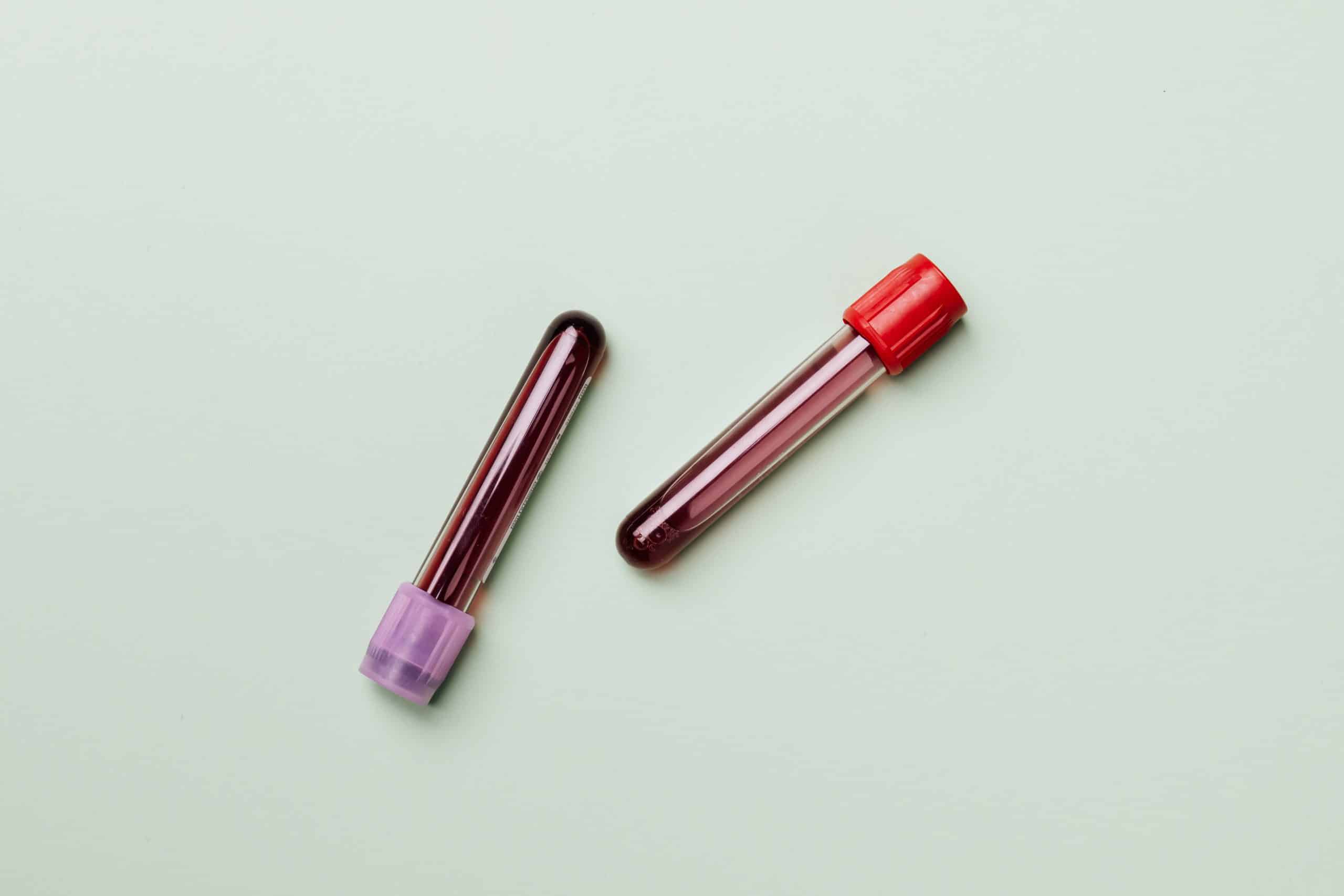Achieving your fitness goals, whether it’s shedding unwanted fat or gaining lean muscle, goes beyond just diet and exercise. The human body is a complex system regulated by various hormones that influence how we store and burn fat and build muscle. Understanding the interplay of these hormones can empower you to make smarter choices on your fitness journey. In this article, we’ll dive deep into the science of how hormones impact fat loss and muscle growth, providing you with evidence-based insights to maximize your results.

1. The Role of Insulin in Fat Loss and Muscle Growth:
Insulin, often associated with blood sugar regulation, plays a pivotal role in both fat loss and muscle growth. When you consume calories (especially carbohydrates), the body releases insulin to shuttle glucose into cells for energy. However, chronically high insulin levels, primarily caused by a caloric surplus and a diet filled with poor quality food, can hinder fat loss by promoting fat storage. We’ll explore how to manage insulin levels through diet and the impact it has on muscle growth.
2. Understanding Cortisol’s Impact on Fat and Muscle:
Cortisol, the “stress hormone,” can significantly affect body composition. In response to stress, cortisol is released, leading to a downward trend in multiple other hormones. Chronically elevated cortisol levels can also potentially cause an increase in fat storage around the abdominal area, however research showing this occurring is limited and somewhat questionable and the primary reason individuals gain fat from higher cortisol levels is due an inability to adhere to a deficit while being stressed.
Moreover, cortisol can also break down muscle tissue for energy during prolonged stress or overtraining. We’ll discuss stress management techniques and training strategies to keep cortisol in check for optimal fat loss and muscle retention.
3. Testosterone and its Role in Muscle Growth:
Testosterone is a key hormone for muscle growth, and it’s not just limited to men. While men have higher natural testosterone levels, women also produce this hormone at lower levels. Testosterone promotes protein synthesis, enhancing muscle repair and growth. We’ll explore the link between testosterone, muscle hypertrophy, and the importance of resistance training in boosting this essential hormone.
4. Leptin and Ghrelin: The Hormones that Regulate Appetite:
The hormones leptin and ghrelin work together to regulate appetite. Leptin, produced by fat cells, signals the brain when we’re full, while ghrelin, produced by the stomach, stimulates hunger. An imbalance in these hormones can lead to overeating and hinder fat loss efforts. We’ll delve into strategies to maintain a healthy appetite regulation for better adherence to your nutrition plan.
5. Estrogen and Progesterone: Impact on Fat Storage and Muscle Mass:
For women, estrogen and progesterone levels fluctuate throughout the menstrual cycle, affecting how the body stores fat and builds muscle. Understanding these fluctuations can help women optimize their training and nutrition strategies based on their hormonal phase.
6. Growth Hormone and its Effect on Fat Loss and Muscle Gain:
Growth hormone (GH) is a powerful hormone that stimulates cell growth, reproduction, and regeneration. It’s a key player in fat metabolism and muscle development. We’ll explore natural ways to enhance growth hormone secretion and its potential benefits for your fitness goals.
How Hormones Influence Fat Loss and Muscle Growth
Harnessing the power of hormones can make a significant difference in your fat loss and muscle growth journey. By understanding how these hormones work and implementing evidence-based strategies, you can optimize your training, nutrition, and lifestyle choices for better results. Remember that everyone’s hormonal profile is unique, and it’s essential to consult with a qualified healthcare professional or fitness expert to tailor your approach based on your individual needs.

The Role of Insulin in Fat Loss & Muscle Growth
Insulin is a hormone secreted by the pancreas in response to elevated blood glucose levels, typically after a meal. Its primary function is to regulate glucose metabolism, allowing cells to take in glucose and use it for energy or store it as glycogen (stored glucose). However, when you consume more calories than your body needs (a calorie surplus), the excess glucose in your bloodstream triggers a higher release of insulin.
In a calorie surplus, insulin promotes the storage of excess calories as fat in adipose tissue (fat cells). This process is known as lipogenesis. Furthermore, high insulin levels can hinder fat breakdown (lipolysis), making it harder for the body to utilize stored fat as an energy source. This is why being in a calorie surplus, can lead to fat storage and make fat loss more challenging.
To better manage insulin levels and support fat loss, your primary focus needs to be consistently adhering to a diet that falls within a calorie deficit and ensuring you’re physically active regularly. This is because both a calorie deficit and regular exercise directly improve insulin sensitivity, as well as lose body fat (calorie deficit) and build muscle (regular exercise, specifically resistance training) – both of which directly and indirectly help manage insulin levels. Beyond that, there are some simple habits you can focus on to help create a balanced and nutrient-dense diet, which also help.
Here are some of those dietary habits and strategies:
Choose Complex Carbohydrates:
Opt for whole, unprocessed carbohydrates like whole grains, vegetables, fruits, and legumes. These foods have a lower glycemic index, meaning they cause a slower and more gradual rise in blood glucose levels, resulting in a more controlled insulin response.
Pair Carbohydrates with Protein and Healthy Fat:
Combining carbohydrates with protein and healthy fats can slow down the absorption of glucose and help stabilize blood sugar levels during and after a meal.
Fiber-Rich Foods:
Include plenty of fiber in your diet, as it can slow down the absorption of glucose and improve insulin sensitivity. Vegetables, fruits, nuts, and seeds are excellent sources of fiber.
Regular Meal Timing:
Consistent meal timing can help regulate insulin levels and prevent large fluctuations in blood sugar.
The Role of Insulin in Muscle Growth
Insulin also plays a significant role in promoting muscle growth. After a resistance training workout, your muscles are primed to absorb nutrients to support repair and growth. Insulin helps shuttle amino acids (the building blocks of proteins) and glucose into muscle cells, enhancing protein synthesis and glycogen replenishment. This aids in muscle recovery and growth, because protein is required for tissue development and glucose (via carbohydrates) are required to nourish, replenish, and hydrate a muscle (i.e. muscle tissue is 60-65% water).
To optimize the anabolic (muscle-building) effects of insulin, some athletes and bodybuilders strategically consume carbohydrates and protein post-workout, known as the “anabolic window.” However, it’s important to note that the anabolic window might not be as critical as once believed, and overall daily nutrient intake is more important for muscle growth in the long term.
Another benefit to insulin, that is often undiscussed, is its inverse relationship with the catabolic stress-hormone, cortisol. This hormone can cause muscle breakdown, which is clearly unfavorable when the goal is building new muscle tissue. However, when we spike insulin through the consumption of both calories and carbohydrates, insulin acts against cortisol by blunting down its response and impact. Therefore we can intentionally spike insulin through the consumption of carbs and calories as a way to lower cortisol at times.
Balancing insulin levels through proper nutrition can not only support fat loss but also aid in muscle growth and recovery. However the main driver of insulin, as a muscle building hormone, is through the process of direct nutrient delivery to the muscle cell and tissue. Consulting with one of our credentialed nutritionist or coaches can be beneficial in tailoring a plan that suits you.
Cortisol’s Role & Impact On Body Composition

Cortisol’s Role as an Energy Utilization Fuel:
Cortisol, often referred to as the “stress hormone,” is produced by the adrenal glands and plays a vital role in the body’s stress response. In times of stress, cortisol is released to mobilize energy stores and ensure the body has enough fuel to cope with the perceived threat. Cortisol acts by increasing the breakdown of stored glycogen into glucose (glycogenolysis) and promoting the release of glucose into the bloodstream, providing a quick energy source for the body.
While cortisol primarily targets carbohydrate metabolism, it can also contribute to the breakdown of protein (muscle tissue) into amino acids. This process is known as gluconeogenesis, where amino acids can be converted into glucose for energy. During prolonged periods of stress or intense exercise without proper nutrition, cortisol may break down muscle tissue to provide the body with an additional energy source.
However, there are also studies correlating higher cortisol levels with higher testosterone levels. This is believed to be because training hard, which is what causes muscle growth, increases cortisol levels as well. Therefore only in extreme scenarios do we need to be concerned with cortisol preventing muscle growth.
Cortisol’s Impact On Fat & Muscle During via Exercise:
During vigorous exercise, cortisol levels typically rise as part of the body’s natural response to physical stress. While cortisol can break down muscle tissue, it’s important to note that this process is generally not a primary source of energy during exercise. The body primarily relies on stored glycogen and fatty acids to fuel intense workouts.
However, cortisol can indirectly impact fat metabolism during exercise. High cortisol levels are associated with increased appetite and cravings for calorie-dense foods, especially those high in carbohydrates and fats. Consuming excessive calories due to cortisol-driven appetite can offset the caloric deficit created from your diet or exercise routine, potentially hindering fat loss efforts.
And although there is research supporting the idea that chronically elevated cortisol levels can also cause some fat storage around the abdominal region, the primary reason for cortisol to cause fat gain is likely due to those effects of increased cravings causing overconsumption of calories (i.e. calorie surplus).
Cortisol’s Effects on Other Hormones & Muscle Building/Fat Loss:
Chronically elevated cortisol levels can negatively impact the balance of other hormones in the body, which may hinder muscle building and fat loss:
- Testosterone: High cortisol levels have been linked to reduced testosterone production, which is critical for muscle growth and recovery.
- Growth Hormone (GH): Prolonged stress and high cortisol levels may suppress growth hormone secretion, which is essential for muscle repair and growth.
- Insulin Sensitivity: Elevated cortisol can impair insulin sensitivity, making it more challenging for the body to utilize carbohydrates effectively and potentially promoting fat storage.
- Thyroid: The thyroid gland is very important in terms of a healthy metabolism or metabolic rate, however the T4 to T3 conversion can be negatively impacted from chronically elevated cortisol levels.
The Impact of Prolonged Cortisol Elevation on Recovery:
Elevated cortisol levels over an extended period can hinder recovery and lead to overtraining or burnout. When cortisol remains high, it can disrupt the body’s natural repair and regeneration processes, leading to fatigue, muscle soreness, and decreased performance.
By managing cortisol levels, you can create an environment conducive to muscle growth, fat loss, and overall well-being while reducing the risk of negative health impacts associated with chronic stress.
7 Steps to Better Manage Your Cortisol Levels:
- Stress Management: Implement stress-reducing techniques such as meditation, yoga, deep breathing exercises, or spending time in nature to lower overall stress levels.
- Proper Nutrition: Ensure a well-balanced diet with adequate macronutrients and micronutrients to support your energy needs and recovery.
- Sleep Quality: Prioritize getting sufficient, high-quality sleep, as poor sleep can elevate cortisol levels and impede recovery.
- Exercise Intensity and Volume: Avoid excessive training volume and intensity, as overtraining can lead to sustained cortisol elevation.
- Nutrient Timing: Consume a balanced meal with protein and carbohydrates after intense workouts to support recovery and reduce cortisol levels.
- Limit Stimulant Intake: Minimize excessive caffeine or stimulant consumption, as they can contribute to elevated cortisol levels.
- Professional Guidance: If you suspect high cortisol levels or are experiencing chronic stress, consider consulting one of our credentialed sports nutritionists to create a personalized plan to manage cortisol effectively.
Testosterone’s Role in Muscle Growth:

It’s essential to first note that while testosterone plays a significant role in muscle growth and other physiological and psychological aspects, it’s not the sole determinant of fitness progress. Genetics, training program design, nutrition, sleep, and overall lifestyle factors all contribute to one’s fitness journey.
Testosterone’s Impact on Muscle Protein Synthesis and Muscle Building:
Testosterone is an androgenic hormone primarily produced in the testes (in men) and in smaller amounts in the ovaries (in women) and adrenal glands. It plays a crucial role in muscle growth due to its effects on muscle protein synthesis. Testosterone binds to androgen receptors on muscle cells, which triggers an increase in the rate of protein synthesis. This means that more muscle proteins are created, leading to muscle repair and growth after exercise-induced muscle damage.
Higher testosterone levels support muscle hypertrophy (increased muscle size) by enhancing the body’s ability to repair and rebuild muscle tissue after intense resistance training. This is one of the reasons why men, who naturally have higher testosterone levels than women, typically have an advantage in muscle building.
Testosterone’s Role in Muscle Growth for Women:
While women have lower natural testosterone levels compared to men, testosterone still plays a role in muscle building for females. Women possess androgen receptors on muscle cells, and even though the absolute levels of testosterone are lower, the hormone can still contribute to muscle protein synthesis and growth. However, due to the hormonal differences, women generally develop less muscle mass than men under the same training conditions.
6 Training and Nutrition Strategies to Positively Impact Testosterone Levels:
- Resistance Training: Engaging in regular resistance training, particularly with compound exercises and those that you can use progressive overload with, overtime (e.g., squats, deadlifts, bench press), has been shown to increase testosterone levels in both men and women.
- High-Intensity Interval Training (HIIT): HIIT workouts have also been associated with increased testosterone production, making them a valuable addition to a workout routine. Know that this can also be a double edged sword, because too much high intensity training can cause elevated levels of cortisol and that added stress can negate these positive effects.
- Adequate Protein Intake: Consuming sufficient protein is essential for supporting muscle protein synthesis. Aim for a protein-rich diet with sources like lean meats, fish, poultry, eggs, dairy, legumes, and plant-based proteins.
- Healthy Fats: Including healthy fats in your diet, such as those found in avocados, nuts, seeds, and olive oil, can support hormone production, including testosterone. This is especially true with saturated fats, however it’s also clear throughout the research that too much saturated fat can have a negative impact on your health.
- Sufficient Caloric Intake: Ensure you’re not in a severe calorie deficit, as this can negatively impact testosterone levels. On the contrary, having too much stored body fat can also cause a drop in testosterone levels. Therefore a calorie deficit can be a positive contributing factor to better testosterone levels, if you’re overweight. In either case, the calorie deficit shouldn’t be prolonged over too large of a time course.
- Sleep: Prioritize getting enough quality sleep, as insufficient sleep can suppress testosterone production.
Testosterone’s Indirect Physiological and Psychological Impacts:
- Motivation and Confidence: Testosterone has been associated with increased motivation and self-confidence, which can positively influence workout performance and adherence.
- Positive Aggression: In controlled amounts, testosterone can enhance competitiveness and aggression during workouts, potentially leading to greater effort and intensity.
- Recovery and Mood: Adequate testosterone levels may contribute to better recovery from workouts and improved mood, reducing the risk of overtraining and burnout.
Always remember that individual responses to training and nutrition vary, and the goal should be to optimize your personal hormone balance and overall well-being. If you have specific concerns about hormone levels or muscle-building goals, consider consulting one of our credentialed sports nutritionists for personalized guidance.
Leptin & Ghrelin (The Hunger Hormones):

How Leptin and Ghrelin Impact Hunger Signals:
Leptin is a hormone produced by fat cells (adipose tissue) and plays a crucial role in long-term appetite regulation. Its primary function is to signal to the brain when we have sufficient energy stores and are satiated. When fat cells release leptin into the bloodstream, it travels to the brain and binds to specific receptors, informing the brain that enough energy is available and reducing appetite. In essence, leptin acts as a “satiety hormone,” helping to control food intake and prevent overeating.
Ghrelin, often called the “hunger hormone,” is produced primarily in the stomach and, to a lesser extent, in other tissues. Its role is opposite to that of leptin. Ghrelin levels rise before meals and trigger hunger signals to the brain, stimulating appetite and prompting us to eat. After eating, ghrelin levels decrease, contributing to the feeling of fullness and satisfaction.
The Impact An Imbalance in Leptin & Ghrelin Can Have:
Leptin Resistance:
Leptin resistance occurs when the brain becomes less responsive to the effects of leptin. This condition can develop due to chronic inflammation, overeating highly palatable foods, and excess body fat. As a result, despite having elevated levels of leptin, the brain doesn’t receive the signal of satiety, leading to increased appetite and a reduced ability to control food intake.
Ghrelin Dysregulation:
Various factors, including sleep deprivation, stress, and irregular eating patterns, can disrupt the normal fluctuations of ghrelin levels, leading to ghrelin dysregulation. When ghrelin is dysregulated, hunger signals may be inconsistent, and people may experience more frequent and intense feelings of hunger, even when they don’t necessarily need to eat.
An imbalance in these hunger-regulating hormones can contribute to overeating, difficulty adhering to a nutrition plan, and potential weight gain.
Strategies to Maintain Healthy Appetite Regulation:
Balanced and Nutrient-Dense Meals: Consume balanced meals that include a mix of protein, healthy fats, and fiber-rich carbohydrates. These nutrients contribute to satiety and help maintain stable blood sugar levels.
Regular Meal Timing: Stick to regular meal times and avoid prolonged periods of fasting, which can disrupt hunger hormones and lead to overeating later.
Mindful Eating: Pay attention to hunger and fullness cues, and eat slowly to allow time for signals of satiety to reach the brain.
Adequate Sleep: Prioritize getting enough sleep, as sleep deprivation can disrupt hunger hormones and lead to increased appetite.
Stress Management: Implement stress-reducing techniques, as stress can impact ghrelin levels and trigger emotional eating.
Hydration: Drink enough water throughout the day, as dehydration can sometimes be mistaken for hunger.
Limit Highly Processed Foods: Reduce the intake of highly processed and sugary foods, as they can disrupt hunger hormones and promote overeating.
Regular Exercise: Engage in regular physical activity, as exercise can positively influence appetite regulation.
Monitor Portions: Be mindful of portion sizes and avoid large, calorie-dense meals that can override natural hunger signals.
By focusing on these strategies, you can support healthy appetite regulation, improve adherence to your nutrition plan, and promote overall well-being. As with any hormonal and dietary aspect, individual responses may vary, and it’s essential to find an approach that works best for you.
If you have concerns about hunger regulation or dietary choices, consider consulting one of our online nutritionists for personalized guidance.
Estrogen & Progesterone’s Impact On Fat Storage & Muscle Growth:
Estrogen and Progesterone: Overview and Relevance
Estrogen:
Estrogen is a group of hormones primarily produced in the ovaries (in women) and in smaller amounts in men’s testes and adrenal glands. In women, estrogen plays a crucial role in regulating the menstrual cycle, supporting reproductive health, and maintaining bone density. In men, estrogen is present in smaller quantities but is essential for reproductive function and overall health.
Progesterone:
Progesterone is another hormone mainly produced in the ovaries (in women) and in smaller amounts in men’s testes and adrenal glands. In women, progesterone is essential for preparing the uterus for pregnancy and maintaining a healthy pregnancy. In men, progesterone has a role in the production of other hormones and overall health.
While estrogen and progesterone are more prominent in their effects in women due to their roles in the menstrual cycle and pregnancy, they also have physiological relevance in men, contributing to various bodily functions and overall hormone balance.
Role of Estrogen and Progesterone in Fat Storage and Muscle Growth:
Estrogen’s Impact on Fat Storage:
Estrogen influences fat storage and distribution in the body. Women tend to have higher body fat percentages than men, and this is partly due to estrogen’s role in promoting fat storage in areas such as the hips, thighs, and breasts. Estrogen promotes the storage of fat in subcutaneous (under the skin) tissues, which is associated with the female “pear-shaped” body.
Estrogen’s Impact on Muscle Growth:
Estrogen also plays a role in muscle growth, though its effects are not as pronounced as testosterone in men. Estrogen supports muscle maintenance and repair and contributes to overall muscle strength and function in both men and women.
Progesterone’s Impact on Fat Storage and Muscle Growth:
Progesterone doesn’t have a significant direct impact on fat storage. However, it plays a crucial role in supporting pregnancy and the development of the embryo, as well as other hormonal processes in both men and women.
Fluctuations in Estrogen & Progesterone (Effects on Fat Burning & Muscle Growth):
Menstrual Cycle in Women:
In women, estrogen and progesterone levels fluctuate throughout the menstrual cycle. During the follicular phase (the first half of the cycle), estrogen levels gradually increase, leading to ovulation. After ovulation, during the luteal phase (the second half of the cycle), both estrogen and progesterone levels rise.
These hormonal fluctuations can impact nutrient partitioning, metabolism, and energy expenditure. Some women may experience increased fat utilization during the follicular phase and decreased fat burning during the luteal phase. Additionally, progesterone may contribute to water retention and bloating during the luteal phase.
Menopause in Women and Aging in Men:
In women, as they enter menopause, estrogen levels decrease significantly. This hormonal change can lead to changes in fat distribution, with more fat accumulation around the abdomen. Estrogen decline may also impact muscle mass maintenance and overall body composition.
In men, as they age, testosterone levels tend to decline gradually, which may affect muscle mass and increase fat accumulation. Moreover, as estrogen levels decrease in aging men, a relative increase in estrogen compared to testosterone levels may lead to similar issues with fat distribution and muscle maintenance.
In conclusion, estrogen and progesterone, while more prominent in their effects in women, also have physiological relevance in men. These hormones play a role in fat storage and distribution and have some influence on muscle growth and maintenance.
Fluctuations in estrogen and progesterone, particularly during the menstrual cycle in women and during aging in both men and women, can impact how the body burns fat and builds muscle.
Understanding these hormonal changes can be helpful in tailoring nutrition and exercise strategies for optimal body composition and overall health. As always, individual responses to hormonal changes may vary, and consulting one of our online nutritionists for personalized guidance is recommended.
How Growth Hormone (GH) Impacts Fat Loss & Muscle:
Growth Hormone’s Role in Fat Metabolism and Muscle Development:
Fat Loss Process:
Growth Hormone is a peptide hormone produced by the pituitary gland in the brain. It plays a crucial role in fat metabolism by promoting lipolysis, the breakdown of stored triglycerides (fat) into free fatty acids and glycerol. These free fatty acids can then be utilized as an energy source by the body. GH stimulates the activity of hormone-sensitive lipase, an enzyme responsible for breaking down fat cells to release these fatty acids. As a result, GH helps increase fat oxidation and reduces fat storage, contributing to the fat loss process.
Muscle Growth Process:
GH also plays a significant role in muscle development or hypertrophy. It stimulates the production of insulin-like growth factor 1 (IGF-1) in the liver and other tissues. IGF-1 is a crucial factor in muscle repair and growth, as it enhances protein synthesis and amino acid uptake in muscle cells, promoting an anabolic (muscle-building) environment. This is why GH is often considered an anabolic hormone, as it supports muscle tissue repair and growth after exercise-induced damage.
Natural Ways to Enhance Growth Hormone Secretion:
High-Intensity Exercise: Engaging in high-intensity resistance training and anaerobic exercises, such as weightlifting, can significantly boost GH secretion. Short bursts of intense exercise, like sprints or HIIT (High-Intensity Interval Training), are also effective.
Adequate Sleep: Prioritize getting sufficient, high-quality sleep, as GH is primarily released during deep sleep stages. Aim for 7-9 hours of sleep per night.
Intermittent Fasting: Some studies suggest that intermittent fasting or time-restricted eating patterns can increase GH levels, particularly during the fasting period.
L-Arginine and L-Ornithine: These amino acids have been shown to stimulate GH release. Foods rich in these amino acids include lean meats, fish, nuts, and seeds.
Protein-Rich Meals: Consuming protein-rich meals, especially those high in essential amino acids like leucine, can support GH secretion.
Avoiding Excess Carbohydrates Before Bed: Consuming a high-carbohydrate meal before bedtime may blunt GH release, so it’s best to avoid heavy carbohydrate intake close to sleep.
Reducing Stress: Chronic stress can suppress GH secretion, so incorporating stress-reducing practices like meditation or yoga can be beneficial.
Maintaining a Healthy Body Composition: GH secretion tends to be higher in individuals with lower body fat percentages and higher muscle mass.
It’s important to note that while these natural strategies may enhance GH secretion, the actual impact on muscle growth and fat loss can vary from person to person. GH is just one factor among many that influence body composition and exercise performance. The combination of proper nutrition, adequate sleep, and appropriate exercise remains fundamental to achieving fitness goals.
Putting It All Together: Achieving Your Fitness Goals Through Hormonal Optimization
Understanding the intricate interplay of hormones in the processes of fat loss and muscle growth can empower you to make informed decisions on your fitness journey. By optimizing hormone levels naturally, you can maximize your results and work in harmony with your body’s physiological processes. Here’s a step-by-step guide to apply the knowledge gained from this article:
1.Balanced Nutrition for Hormonal Balance:
Focus on a balanced and nutrient-dense diet to support optimal hormone function. Choose whole, unprocessed foods, including lean proteins, healthy fats, complex carbohydrates, and plenty of vegetables and fruits. Avoid excessive consumption of refined sugars and processed foods that can disrupt insulin and hunger-regulating hormones.
2. Manage Insulin Levels for Fat Loss and Muscle Growth:
Pay attention to meal timing, macronutrient composition, and portion sizes to maintain stable insulin levels. Aim for balanced meals that include protein, healthy fats, and complex carbohydrates. Avoid prolonged periods of fasting and large carbohydrate-heavy meals close to bedtime.
3. Stress Management for Hormonal Health:
Implement stress-reducing techniques such as meditation, yoga, or spending time in nature to keep cortisol levels in check. Chronic stress can disrupt hormonal balance and hinder fat loss and muscle gain.
4. Supporting Hormonal Balance through Sleep:
Prioritize getting 7-9 hours of high-quality sleep per night. Adequate sleep is essential for hormone regulation, including growth hormone secretion and hunger hormones (leptin and ghrelin).
5. Strategies for Appetite Regulation:
Practice mindful eating, pay attention to hunger and fullness cues, and avoid emotional eating. Consume balanced meals with protein, fats, and fiber-rich carbohydrates to promote satiety and support healthy appetite regulation.
6. Exercise for Hormonal Optimization:
Incorporate resistance training, high-intensity exercises, and regular physical activity into your routine. These activities can positively influence hormones such as testosterone and growth hormone, supporting muscle growth and fat loss.
7. Individualize Your Approach:
Remember that everyone’s hormonal profile and response to different strategies are unique. It’s essential to tailor your approach based on your specific needs, goals, and preferences. Consulting with a registered dietitian, fitness expert, or healthcare professional can provide personalized guidance.
8. Patience and Consistency:
Hormonal changes take time and require consistent lifestyle habits. Be patient with your progress and stay committed to your fitness and nutrition plan. Results may not come overnight, but with dedication and perseverance, you can achieve your goals.
9. Monitor and Adjust:
Regularly assess your progress and adjust your approach as needed. Keep track of your workouts, nutrition, and how your body responds to different strategies. This self-awareness will help you refine your plan for ongoing success.
Remember that achieving your fitness goals is not just about manipulating hormones, but rather creating a holistic lifestyle that supports overall health and well-being. Embrace the process, celebrate small victories, and stay committed to your journey. With a well-rounded approach that considers nutrition, exercise, stress management, and sleep, you’ll be well on your way to achieving your desired body composition and fitness goals.
Always listen to your body and seek professional guidance if you have specific health concerns or questions about your fitness plan. Empower yourself with knowledge, stay consistent, and enjoy the rewarding experience of reaching your fitness and nutrition goals. Your body is an incredible, adaptive system, and by working with it, you’ll unlock its full potential for a healthier, stronger, and more vibrant you.
Conclusion:
In conclusion, hormones play a significant role in the complex processes of fat loss and muscle growth. By understanding the impact of insulin, cortisol, testosterone, leptin, ghrelin, estrogen, progesterone, and growth hormone, you can make informed choices to optimize your fitness journey. Balancing these hormones through proper nutrition, stress management, adequate sleep, and targeted exercise can pave the way for achieving your body composition and fitness goals.
If you’re ready to take your fitness and nutrition to the next level with personalized guidance and expert support, look no further than Tailored Coaching Method. Our Online Fitness and Nutrition Coaching program is designed to cater to your unique needs, goals, and preferences. Our team of experienced coaches will create a customized plan tailored specifically for you, incorporating the knowledge we’ve explored in this article to optimize your hormonal balance and overall results.
Whether you’re aiming to lose body fat, gain lean muscle, improve athletic performance, or enhance your overall well-being, our coaching program is your pathway to success. Don’t miss this opportunity to transform your life and unlock your full potential. Take that crucial step toward achieving your fitness dreams and join Tailored Coaching Method’s Online Fitness and Nutrition Coaching program today, by clicking here now.




















































































































































































































































































































































































































































































